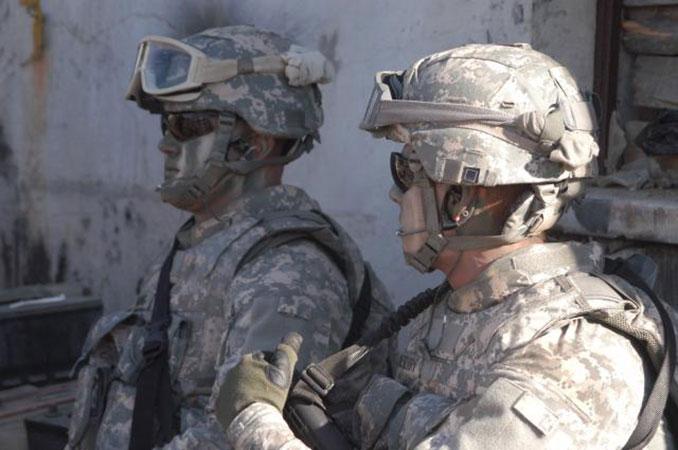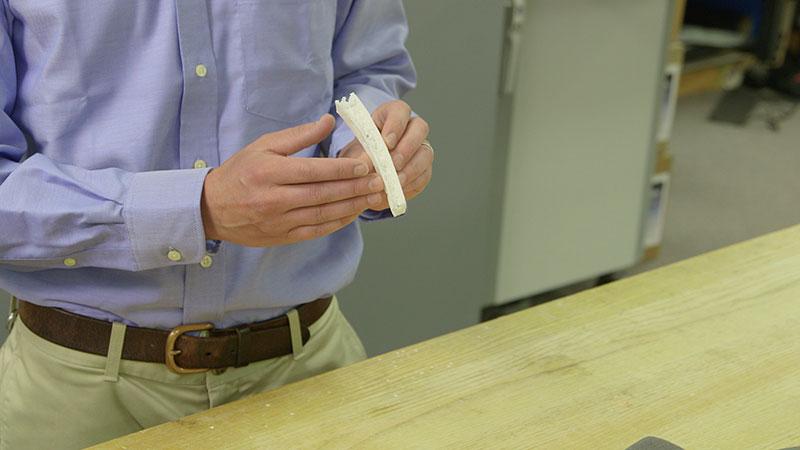 Boooooom! A bomb goes off on the battlefield, and it is instantly proceeded by the unfortunate casualties of war. Limbs are lost, and soldiers are killed, yet not all of the injuries are an effect of bomb fragmentation. Many injuries to solders in the vicinity of an explosion are caused by the substantial and rapid air pressure change that results from a blast of a high-order explosive, such as C4 or TNT. These shock waves, have the ability to penetrate a soldiers helmet and cause significant brain damage or even death.
Boooooom! A bomb goes off on the battlefield, and it is instantly proceeded by the unfortunate casualties of war. Limbs are lost, and soldiers are killed, yet not all of the injuries are an effect of bomb fragmentation. Many injuries to solders in the vicinity of an explosion are caused by the substantial and rapid air pressure change that results from a blast of a high-order explosive, such as C4 or TNT. These shock waves, have the ability to penetrate a soldiers helmet and cause significant brain damage or even death.
Because of this significant risk posed to soldiers, the U.S. Army Research Laboratory (ARL) is creating 3D printed models of the human skull, in order to study the effects of these powerful shock waves on the inside and outside of the skull, as well as on the skull itself. In doing this, they hope to be able to create enhanced military helmet pads, shells and other protective gear.
It’s not new for the U.S. Army to use synthetic human bones for the study of wartime occurrence on the human body, however, traditional synthetic bone is not always an accurate means of measuring the effects of a potential incident. They are mostly designed for use by doctors when practicing surgical procedures, thus they are not exactly the best specimen to test the effects of a massive bomb blast on.
Another method of study, in the past, as well as the present, has been the use of donor skulls, from individuals who have passed away and donated their bodies to science. However, this also has some problems.
“The mechanical properties of the human skull change with age and depend on the health of the individual. Donor skulls that may be available for testing would typically come from older people, and the properties of those skulls can be highly variable and may not have the same response as the average skull of the Army soldier population,” explained Dr. Thomas Plaisted, materials engineer in the Materials and Manufacturing Science Division at the Army Research Laboratory (ARL).
So the Army has turned to 3D printed cranial bones, which look and behave like the skulls of 20-30 year old soldiers. The bones are 3D printed using the Army’s own synthetic bone capturing material. They are created with a specialized material that is made with the specific goal of allowing a consistent response to stimuli (in this case, explosions). To create the replicas, researchers take a CT scan of a real human skull, and then 3D print them using composite materials. All of the details need to be kept consistent, such as density of different parts of the skull. Once complete, they will use the models to test new helmet padding materials on them, under simulated bomb blast scenarios.
“The goal is to determine how the pads and helmet shell materials protect the head from injury,” Plaisted said. “We are developing new helmet padding materials to improve the impact protection afforded by the Army’s helmets. The helmet can withstand impact at a certain velocity while protecting the head from accelerations that would lead to injury. In the extreme case, excessive acceleration may lead to skull fracture.”
Earlier in the year the the ARL team tested their first 3D printed synthetic bone against that actual bone. The test included hitting the synthetic bone at a high velocity, and comparing it to the fracture patterns of an actual bone. They determined that the synthetic printed bone was a ‘close match’. Plaisted also stated, that next the ARL will try and determine the limits of resolution that they can achieve with 3D printing. The 3D printing of these synthetic skulls is expected to commence sometime this fall.
This is just another one of the many uses of 3D printing that the U.S. Army is either already using, or is investigating potential uses for. The technology seems to have a very important future for the U.S. military.
What do you think? Will the 3D printing of skulls be able to provide researchers with a better understanding of the effects caused by explosions during combat? Discuss in the 3D Printed Cranial Bones forum thread on 3DPB.com. More details on this story can be found in the video below.
[Source: army.mil]Subscribe to Our Email Newsletter
Stay up-to-date on all the latest news from the 3D printing industry and receive information and offers from third party vendors.
You May Also Like
3D Printing Unpeeled: New Arkema Material for HP, Saddle and Macro MEMS
A new Arkema material for MJF is said to reduce costs per part by up to 25% and have an 85% reusability ratio. HP 3D HR PA 12 S has been...
3D Printing News Briefs, January 20, 2024: FDM, LPBF, Underwater 3D Printer, Racing, & More
We’re starting off with a process certification in today’s 3D Printing News Briefs, and then moving on to research about solute trapping, laser powder bed fusion, and then moving on...
3D Printing Webinar and Event Roundup: December 3, 2023
We’ve got plenty of events and webinars coming up for you this week! Quickparts is having a Manufacturing Roadshow, America Makes is holding a Member Town Hall, Stratafest makes two...
Formnext 2023 Day Three: Slam Dunk
I’m high—high on trade show. I’ve met numerous new faces and reconnected with old friends, creating an absolutely wonderful atmosphere. The excitement is palpable over several emerging developments. The high...

































